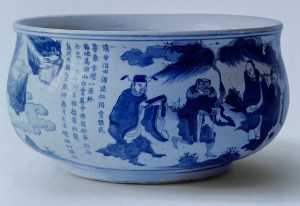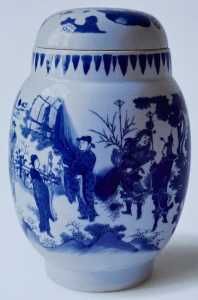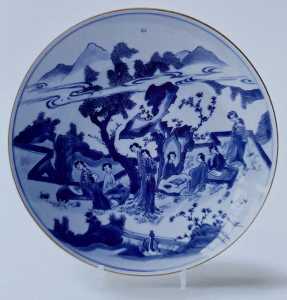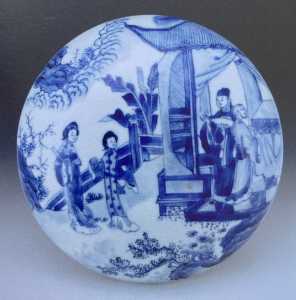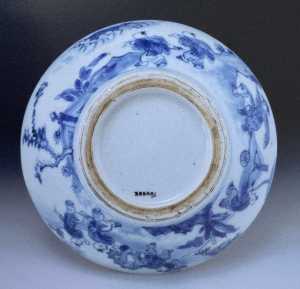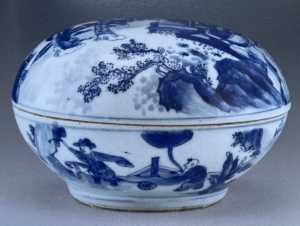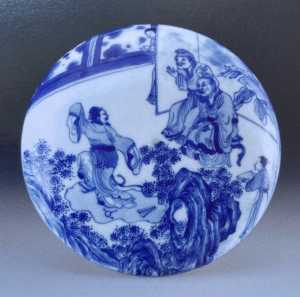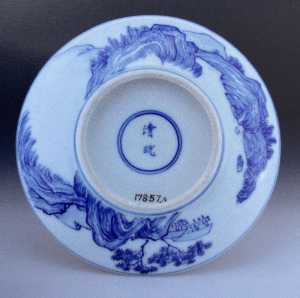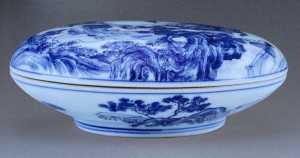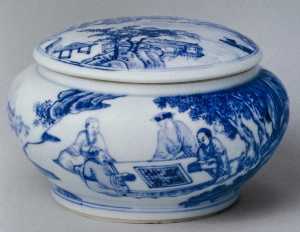The Chinese and Asian Art Forum. For Fans, Collectors and Dealers.
 Basic Rules For the BidAmount Asian Art Forum: Talk about whatever you want. You can even discuss and offer things that are for sale if they are authentic. Maximum image file size per post is 2 MB. Images of 700pxl x 700pxl are optimal if saved at a medium resolution. Be respectful of others and enjoy yourself. Click the YouTube link for a brief tutorial on using the forum. You can also EMBED Videos by cutting and pasting from You-Tube, Vimeo etc.
Basic Rules For the BidAmount Asian Art Forum: Talk about whatever you want. You can even discuss and offer things that are for sale if they are authentic. Maximum image file size per post is 2 MB. Images of 700pxl x 700pxl are optimal if saved at a medium resolution. Be respectful of others and enjoy yourself. Click the YouTube link for a brief tutorial on using the forum. You can also EMBED Videos by cutting and pasting from You-Tube, Vimeo etc.
NOTE: To post an item or add a new post, click open the category title from the FORUM LIST, and CLICK the Blue ADD TOPIC button.
I also have been trying to find a comparison and only found the one posted above. I am intrigued, especially as you think it may be earlier, I hope someone, Stuart maybe, can confirm it.
For me, the male figure in particular does not look like Kangxi men are depicted. I don't know about earlier periods, but I have seen this style of drawing later. I felt the decoration was too busy for the Yongzheng period, I may be wrong on that, and everything else of course, but the orange peel look to the base also makes me think Qianlong.
This is very interesting, looking forward to hearing more.
@julia Yes, very curious. I'm starting to think the iron red around the unglazed inner ring is unrelated to the paste - it does not appear on the foot rim, which is the same paste. So, I'll give it a gentle wash with soap and water later today, and see what happens.
Perhaps it is a very good 19th c. copy, but I've had many Kangxi revival pieces ... the ones I've handled are heavily potted, even when small in size. This one is remarkably delicate. But, if it turns out to be 19th c., it won't hurt my feelings any.
About 10 years ago, my mentor told me a story about a time he was asked to assess the collection of Famille Noir porcelains at the Victoria & Albert Museum. After completing his research, it was discovered that nearly all the Famille Noir examples thought to be Kangxi were in fact either 19th c. revival, or Kangxi famille verte that had later been reglazed in the 19th c. as Noir due to its popularity at the time of the turn of the 20th c.
Mistakes happen.
I've been looking at the manner of how the clouds are rendered, that and the wide foot rim that takes up nearly the entire bottom of the box must be clues to its age. I'm hoping someone finds another like it in their research.
19th century would be my second choice as the man is veering towards a 19th type but the eyes are wrong, I think.
It may be good if someone could check them out in the Eklof book, it may add something to the discussion.
I think the faces and dress, etc. look like either late Kangxi or Yongzheng/possibly early Qianlong. But my guess would be Yongzheng. At any rate 1710-1740 is my newbie assessment. Nice find!
On the base of the paste box, it looks like it may have the Y pattern spur mark in one photo or it may just be the light. If it is Y then look at possibility if Japanese. I think both pieces lovely. Sharon
So, I've had my coffee, and I think I've solved a portion of the mystery.
The strange iron accumulation around the inner mouth of the top and bottom are from external sources... Not the paste.
The heavy crazing is because it is soft paste...I missed this because I just don't encounter it often. So, the soft paste has been contaminated. I'll soak it in peroxide for a week...should clean up just fine.
Not 100% sure, but the use of soft paste is typically early 19th c. or earlier. So, I don't believe it's late 19th c. revival.
Yongzheng? This would be a surprising design for the Yongzheng, but for those who have handled Yongzheng, you know the paste is remarkably similar.
My conclusion...Kangxi. Compare to this example....
https://cathy-hunt.co.uk/kangxi-soft-paste-porcelain-box#gallery-1
@greeno107 Must have been the light, first photo of base of paste box, no spur Mark's, second photo close up of base must just be dimples in porcelain. I need to turn off spell check, it is giving everything to Mark again.
Hi Greeno -
Just to illustrate figural painting progression, attached images:-
1, large censer dated by inscription to Tiangi five year, so 1625, Butler Family Coll ...
2, large oviod jar/cover, Chongzhen period ca. 1635-40, Butler Family Coll ...
3, large dish, Shunzhi period ca. 1650-60, Butler Family Coll ...
4/5/6, small box/cover, early Kangxi period ca. 1662-75, Shanghai Museum ...
7/8/9, small box/cover, early Kangxi period ca. 1662-75, Shanghai Museum ...
10, small jar/cover, Kangxi period, Palace Museum, Gugong, Beijing ...
If soft paste then certainly no earlier then 18th C, but really my area so I will defer to yourself and others to compare painting styles between these and your box/cover posted ...
Perhaps if Giovanni@clayandbrush, who has great knowledge of such wares, see this thread he may like to comment ...
Stuart
Dear Greeno,
Since the first picture, I saw that it is a soft paste box, a nice one, and by the overall painting I thought that it should be mid 19th century.
Soft paste was common then on small objects, especially snuff bottles, for example.
Going further in reading the thread, I see that you have found that it is soft paste. But Kangxi, no, it isn’t, and even less, early than that. As illustrated by Stuart, the painting style was completely different.
Difficult to date it exactly, but I remain with that opinion, about mid 19th century, or a bit earlier or later.
Instead, it is not easy to date that vase, for what I know. It is a case when the piece must be handled to have the correct feeling of the glaze.
Regards,
Giovanni
Following Greeno's and Giovanni's comments I have read up on soft paste porcelain and can see this is a fairly typical example. I always forget about it, thinking only of european soft paste. I know it is different and I guess I find it a bit confusing. For anyone else who may feel the same here is a link to an explanation.
http://gotheborg.com/glossary/softpaste.shtml
@clayandbrush and Stuart, Thank you!
I don't disagree at all, but how strange for Kangxi style design to appear outside the Kangxi not the late 19th c. revival.
I'm inclined to date it to late 19th c., just because that follows historical precedent.
Do either of you have any photos of examples of early-mud 19th c. Kangxi style porcelains?
In either case, it was fun to share and learn! Happy to have it regardless of age.
What about my.miniature vase? The application of the slip on the foot is not what I would expect on late Qing. I would appreciate your thoughts. Thanks.
Dear Greeno,
why talking of Kangxi style? I didn’t say that the decoration on your pot is Kangxi style. Rather later 19th century, if not mid century as I think.
If your box was Kangxi revival, the figures should look Kangxi, which is not the case.
As for the vase, I already said that I can’t have a sure opinion by the pictures only. It should be handled.
Regards,
Giovanni
@clayandbrush Oh...I think I understand.
If I understand your position, if it is not rendered exactly like a Kangxi piece, with the exception of the paste, then it is not considered revival.
From my perspective, the influence of later Qing dynasty styles can be seen in almost every piece that I consider 'revival'. For instance, there are countless prunus jars with 'cracked ice' design and Kangxi marks from the late 19 th c. that I consider 'revival', although they lack the cracked ice lines. The the more figural decorations, dragon design, and the such.
Just think about the number of late 19th c. pieces that bear Kangxi marks, but the design is all wrong for the Kangxi. Are these not considered 'revival'? I think they are.
In my opinion, these type of contemporary influences that changed how the design was rendered do not disqualify it from being 'revival', but I have no issue if this is how you feel.
However, even by your perspective, that my box is not revival, I simply come up short with examples from other period of the Qing that produce similar blue and white wares depicting Romance of the Western Chamber. I think I recall some Yongzheng examples that come very close, but I come up empty for anything in the 19th c., except towards the end.
Nevertheless, an interesting perspective to consider. Thank you.
Well, dear Greeno, it is matter of opinions, I think.
I call “Kangxi revival” the ware that is copying Kangxi features, same motifs, same style of painting, same shape of vessels. Even the paste is better than other contemporary ware. Items that are immediately recalling the Kangxi ware and can even be trusted as genuine Kangxi to not experts.
I do not think that an item that is immediately spotted as much later should be called “Kangxi revival” only because it is bearing an apocryphal Kangxi mark. Kangxi revival ware was made with the intention of replicate the originals in the best possible way.
Regards,
Giovanni
@clayandbrush You're being awfully harsh to the artists of the 19th c., who commemorated the Kangxi with their interpretation of the 'Kangxi' wares, but whom fell short of your high standards.
I think it is far more accurate to say that a revival in the interest for the Kangxi style took place in the late 19th c., during which varying qualities of porcelains honoring the Kangxi were made, some better than others, but all of which were created during this period of increased interest, and therefor should be considered revival.
In other words, 'revival' is a measurement of a period of time of popularity that occurs after the original period of creation, not a measurement of quality.
If it was intended as a measurement of quality, than all 'revival' period objects (Gothic, Egyptian, Greek, etc) would be determined by subjective assessment of their quality of rendering, rather than the period made. That's not how it works.
I really do appreciate your remarks, and yes, you and I differ on our views on this piece - that's okay, no harm and no fowl. However, I think your assessment of the age of my box as mid-19th c. is incorrect.
I have never, never, never seen blue and white scene rendered in anything close to this manner from the mid-19th c., and my aversion to believing that I have found a one of a kind anomaly from that period is beyond my ability to suspend reasonable disbelief.
As I said before, I can accept the possibility that the box is just a nicely rendered late 19th c. example, but in handling the box, I am quite comfortable assigning an earlier age of 17th/18th c.
Thanks for visiting "The BidAmount Asian Art Forum | Chinese Art"
If you sell on eBay, or have a shop feel free to post images and descriptions and links.
Check back often for discussion about the latest news in the Chinese art and antique world. Also find out about the latest Asian art auctions at Sotheby's, Christie's, Bonhams and Tajans.
Auction results for: fine porcelain, ceramics, bronze, jade, textiles and scholar's objects. As well as Japanese, Thai, Vietnamese and other Asian cultures.
Thank you,
Peter Combs
Topics and categories on The BidAmount Asian Art Forum | Chinese Art
Kangxi vases, Kangxi dishes and chargers, Kangxi ritual pieces, Kangxi scholar's objects, Qianlong famille rose, Qianlong enamels, Qianlong period paintings, Qianlong Emporer's court, Fine porcelain of the Yongzheng period. Chinese imperial art, Ming porcelain including Jiajing, Wanli, Xuande, Chenghua as well as Ming jades and bronzes.
The BidAmount Asian Art Forum | Chinese Art
A free Asian art discussion board and Asian art message board for dealers and collectors of art and antiques from China, Japan, Korea, Thailand, Cambodia, Vietnam and the rest of Asia. Linked to all of the BidAmount Asian art reference areas, with videos from plcombs Asian Art and Bidamount on YouTube. Sign up also for the weekly BidAmount newsletter and catalogs of active eBay listing of Chinese porcelain, bronze, jades, robes, and paintings.
The art of calligraphy - and for the ancient Chinese it certainly was an art - aimed to demonstrate superior control and skill using brush and ink. Calligraphy established itself as one of the major Chinese art forms during the Han dynasty (206 BCE - 220 CE), and for two millennia after, all educated men were expected to be proficient at it.
The Museum’s collections of Asian art span nearly five millennia and encompass the cultures of China, the Himalayas, India, Japan, Korea, and Southeast Asia. In 2007, the Museum launched an initiative to create dedicated galleries for the collection, beginning with a gallery for the arts of Korea ...
Chinese art is full of symbolism, in that artists typically seek to depict some aspect of a totality of which they are intuitively aware.
China Online Museum is the finest online museum of Chinese art. It features Chinese calligraphy, painting, ceramics, bronzes, carving, and other artworks.
Chinese Ceramics & Works of Art. Overview Upcoming auctions Contacts Auction results ... Christie’s sales of Chinese ceramics and works of art showcase centuries of Chinese history. Held throughout the year in London, New York, Paris and Hong Kong, they attract a wide audience of collectors and connoisseurs vying for pieces as diverse as ...
Explore Asian Art Week. Contact the Specialist Department. Chinese Paintings ... Senior Specialist, Head of Sale. [email protected]. Tel:+1 212 641 5760. Bid in-person or online for the upcoming auction:Fine Chinese Paintings on 10 September 2019 at New York. Bid in-person or online for the upcoming auction:Fine Chinese Paintings on 10 ...
Discover an abundance of must-see art from all corners of a vast continent at Christie’s NY Asian Art Week. From contemporary classical and Chinese paintings to works with exemplary provenance from the Art Institute of Chicago, our Rockefeller Paza galleries will be full of ancient treasures and contemporary masterworks in a salute to the vibrant arts of Asia.
Sold to benefit The Art Institute of Chicago’s Asian Art Acquisition Fund, the sale features 84 lots with a focus on Ming and Qing porcelains, and offers a rare insight into the taste for collecting Chinese ceramics and works of art in the Midwest from the end of the 19th century through the 1980s. Highlights include two Wanli wucai garlic-head vases, a Qianlong mark and period, blue and ...
Specialist, Chinese Paintings, Christie's London Dr Malcolm McNeill is a Specialist in Chinese Paintings at Christie’s, based in London. He previously worked as an assistant curator of the Chinese collections and the Victoria and Albert Museum in London, as a researcher at the British Museum, and as a translator and tour guide at the National Palace Museum in Taipei.
The Christie's Education 2020 Conference: The Chinese Art Market 18 Jun 2019 Christie’s Education is delighted to announce our first international academic conference in Asia which will take place in Hong Kong from 26-27 November 2020 at the Hong Kong Convention and Exhibition Centre and will run in parallel with Christie’s Hong Kong Autumn Auctions.
The summer Chinese Art sale in Hong Kong will feature works of art from several private collections, including Qing porcelains and textile from the collection of the legendary Chinese art dealer A. W. Bahr (1877–1959), fine gilt bronze Buddhist sculptures from an old Hong Kong collection, an East Asian collection of Qing dynasty wine cups and jades, and a Japanese collection of Song ceramics ...
Sotheby's Chinese Works of Art Department holds two auctions each year in London, New York, Hong Kong and Paris.
Chinese Art - View Auction details, bid, buy and collect the various artworks at Sothebys Art Auction House.
With more than 340 Chinese works of art dating from the Neolithic to the Republic periods, highlights of this sale include a selection of Qing Imperial monochromes from the collection of Arnold and Blema Steinberg, early ceramics from the Art Institute of Chicago and Chinese porcelain and works of art from the collection of Henry Arnhold.
Results: Sotheby's Asia Week achieved $52.4 million in six strong auctions, exceeding pre-sale estimates. With 76.5% of lots sold and 60.3% of lots surpassing high estimates, the Asian art sales at Sotheby's indicate continued collector interest in the finest works of art from China, India and and the Himalayas.
Today's sale of Important Chinese Art will proceed as planned with sessions at 10 AM and 2 PM EDT. Sotheby's will be monitoring the weather conditions throughout the day and will be available to coordinate alternative bidding options should conditions make it difficult for clients to attend the auction in person.
Bonhams Chinese Art department is renowned for offering the finest works of art representing the richness and breadth of China's artistic heritage, particularly Imperial porcelain, white and spinach green jades, cloisonné and Buddhist art. Specialised international auctions are held globally, including London, Hong Kong and San Francisco.
Bonhams : Chinese Works of Art We use cookies to remember choices you make on functionality and personal features to enhance your experience to our site. By continuing to use our site you consent to the use of cookies. Please refer to our privacy and cookie policies for more information.
Bonhams Fine Art Auctioneers & Valuers: auctioneers of art, pictures, collectables and motor cars. We use cookies to remember choices you make on functionality and personal features to enhance your experience to our site. By continuing to use our site you consent to the use of cookies. ... Chinese Art (US) General enquiries
Bonhams : Fine Chinese Art We use cookies to remember choices you make on functionality and personal features to enhance your experience to our site. By continuing to use our site you consent to the use of cookies. Please refer to our privacy and cookie policies for more information.
Bonhams Fine Art Auctioneers & Valuers: auctioneers of art, pictures, collectables and motor cars Bonhams : Asian Art We use cookies to remember choices you make on functionality and personal features to enhance your experience to our site.
Bonhams are international auctioneers of fine Chinese and Japanese art. We specialise in rare Imperial and Export Chinese ceramics and works of art, as well as Japanese ceramics, fine and decorative works of art from the Neolithic Period to the 20th century. View on map
Bonhams Fine Art Auctioneers & Valuers: auctioneers of art, pictures, collectables and motor cars. We use cookies to remember choices you make on functionality and personal features to enhance your experience to our site. By continuing to use our site you consent to the use of cookies. ... Asian Art Bonhams. Work. 22 Queen St.
